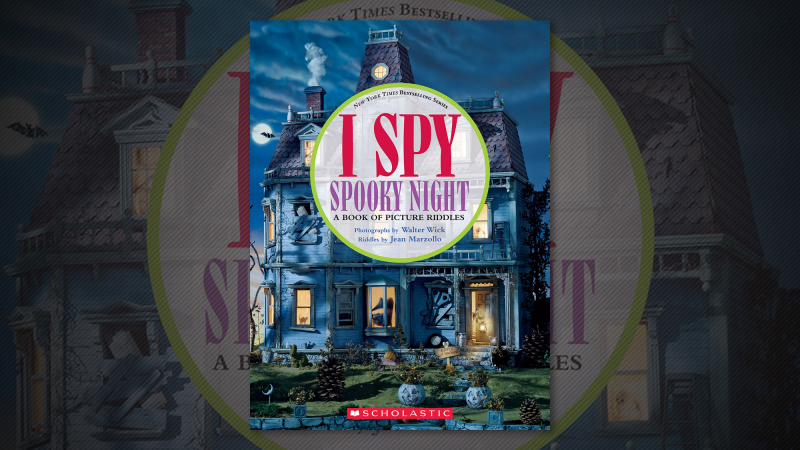Can you spy a broken bone? The word “Boo”? A padlock or “1982”?
How about a half-decorated picture frame in the set of the “A Blazing Fire,” spread, or an idea in the initial I Spy Spooky Night storyboard that didn’t make it into the final book?
Below, Walter Wick—the award-winning photographer of the New York Times-bestselling I Spy series—gives us a peek behind the scenes of his some of the most iconic photos from I Spy Spooky Night.
Check them out below, and learn more about the reissue of I Spy Spooky Night—complete with new bonus riddles—at scholastic.com/ispyspookynight!
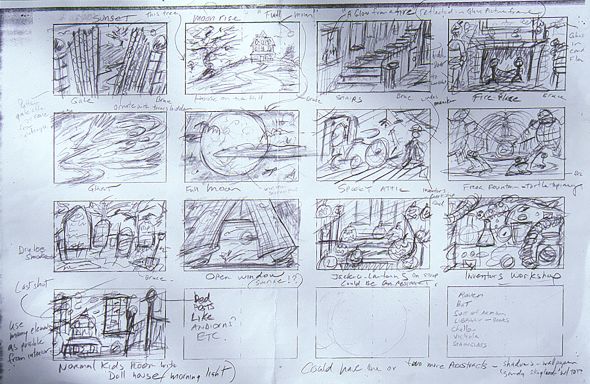
I did the artwork for all the I Spy books and Jean Marzollo wrote all the riddles. Before we started any book, Jean and I discussed ideas so we knew what direction we were going in.
This is my initial set of drawings (called a storyboard) for what would become I Spy Spooky Night. You'll recognize some scenes from the book, but others didn't make the cut. Changes are always made along the way!”—Walter Wick
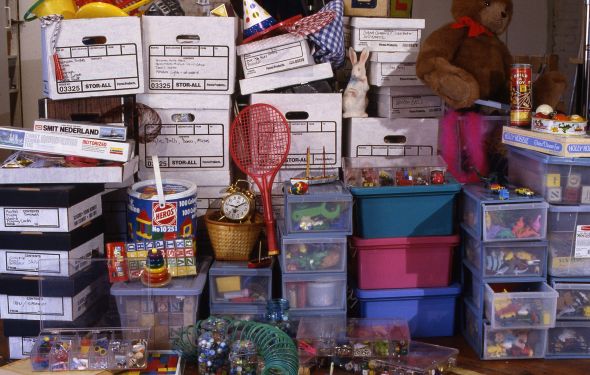
“This is how my prop storage looked around the time I Spy Spooky Night was being made. You may recognize some of these items from other books, too!”—Walter Wick
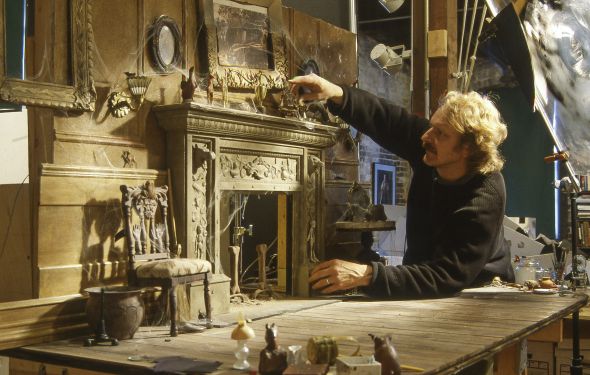
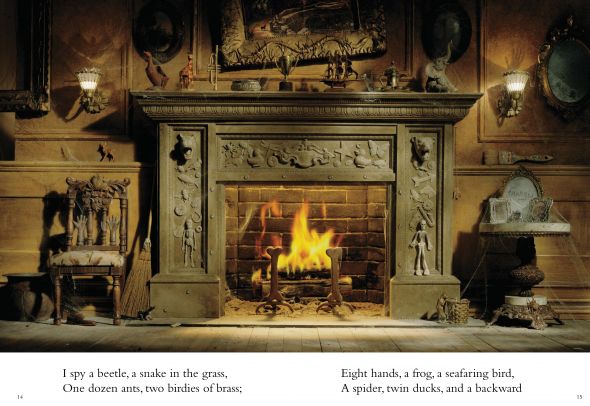
“This spread is called ‘The Blazing Fire’. I did not use real flames in this fireplace. Instead, I took a separate photo of flames burning in a real fire place (which is much safer), and superposed that picture into this scene using a double exposure technique.
Notice something funny about the picture frame above the mantel? Only half of the frame has been decorated. That's because my pictures are carefully planned out in advance, and to save time on model building, I only build what is needed for the photo. Look at the final picture to see how only the lower part of the frame is visible. What do you spy in that frame's decoration? Scary!”—Walter Wick
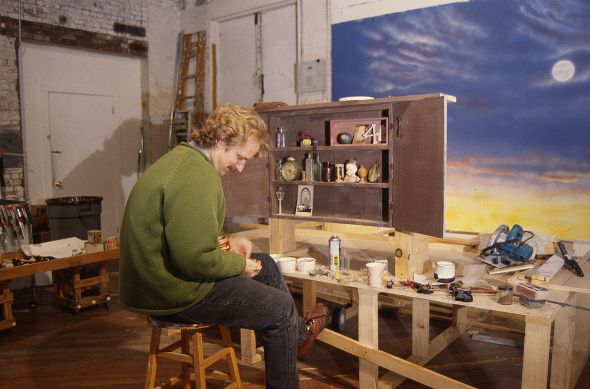
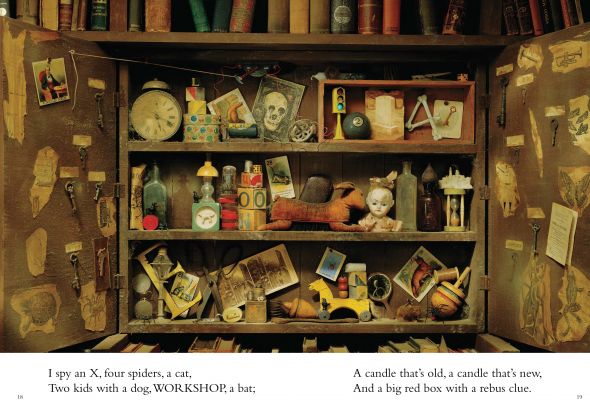
“There is more than meets the eye in this simple ‘shelf shot’—if you look at the finished picture in the book, it's really a shelf within a larger bookshelf, suggesting that it's a secret cupboard. Upon opening the cupboard doors, a string pulls on a switch that's connected to a battery and turns on a mini traffic light, where the word "go" is lit up. I didn't have a mini traffic light so I made one from scratch (you can see it on the table in front of me).
The traffic light is part of the Rebus—a picture/word puzzle told with visual clues. Can you read it? Jean Marzollo loved Rebus puzzles, and suggested the idea of using one. I love Rube Goldberg contraptions and came up with the mechanism to call attention to the Rebus.
Behind the shelf is the sky backdrop I hand-painted with an airbrush. The backdrop was used for the cover and in five other pictures in the book. Can you spy them?”—Walter Wick
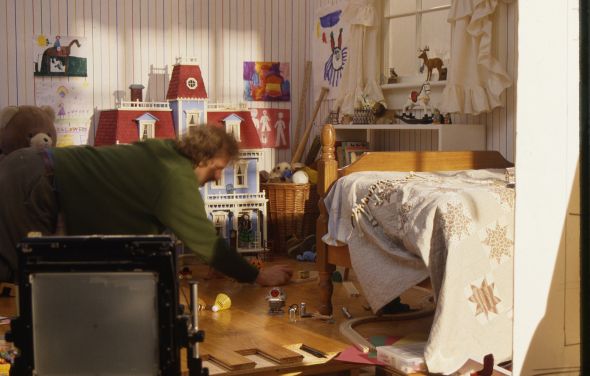
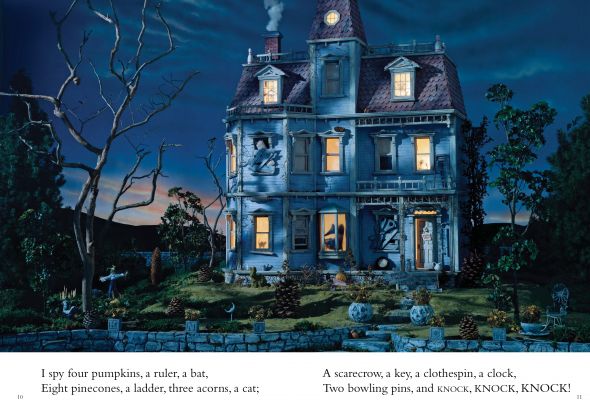
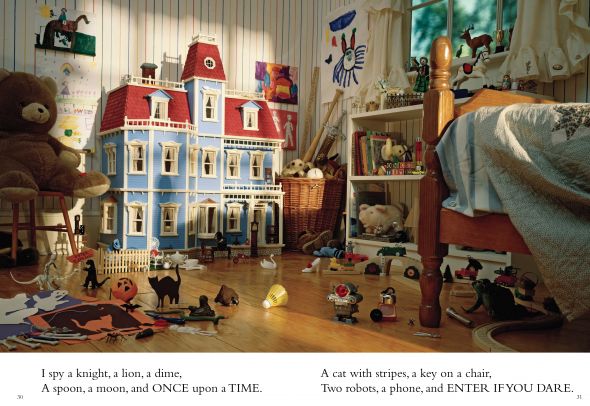
“The I Spy Spooky Night house was made from a standard Victorian doll house (photo 1). I actually bought two identical doll houses, one I could wreck and make all spooky looking for ‘House on the Hill’ (and the cover), and another that I painted real pretty for the bedroom scene (photo 3)–the final picture in the book. That final scene is called ‘Good Morning.’ Maybe the spooky scenes that came before were all just a Halloween dream. What do you think?”—Walter Wick
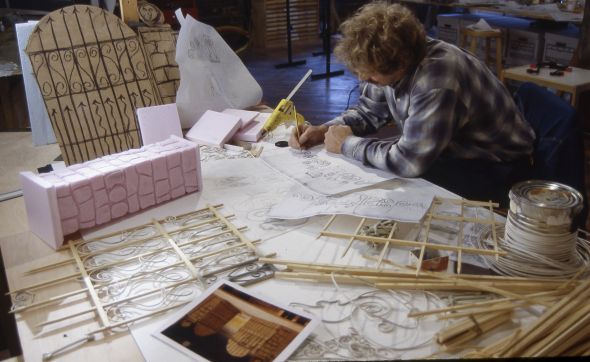
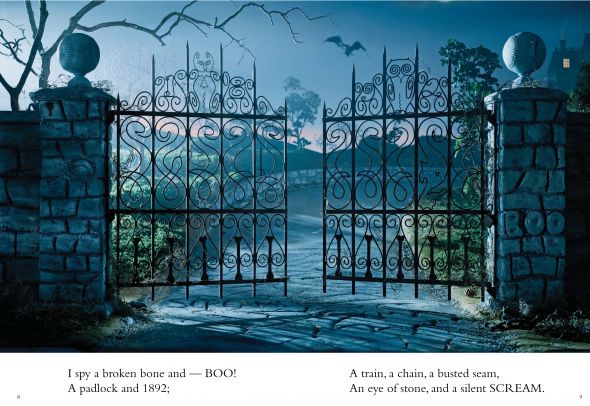
“The ‘Creaky Gate’ was first drawn on cardboard and photographed as a test. I then refined the gate in a drawing so I could build in some hidden objects so Jean Marzollo had plenty of scary things to put into her I Spy rhyme! The swirly iron decoration of the gate was made by bending electrical wire into the shapes on my drawing. The stone pillars where carved out of Styrofoam.”—Walter Wick
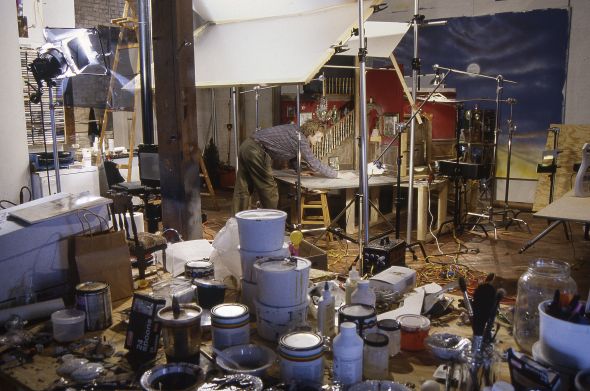
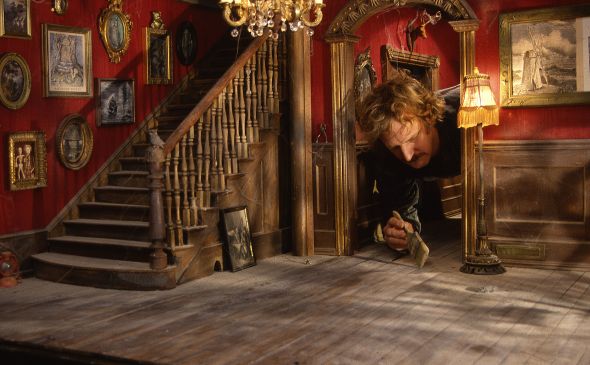
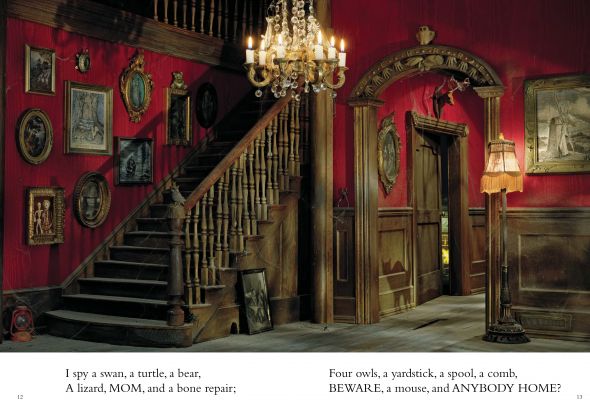
“This is the set of ‘The Empty Hall’ from I Spy Spooky Night, 1993. The miniature room was built by model maker Bruce Morozko, then decorated, distressed (made to look old and dusty), and photographed by me in my studio. Look at that mess!
In the second photo, I am using a paint brush as a broom to smooth out the dust we put on the floor of ‘The Empty Hall.’ A special machine was used to make artificial cobwebs. I used real candles in the candelabra at the top of the room. You can't see them here, but notice how they are lit with real flames in the final picture.”—Walter Wick

